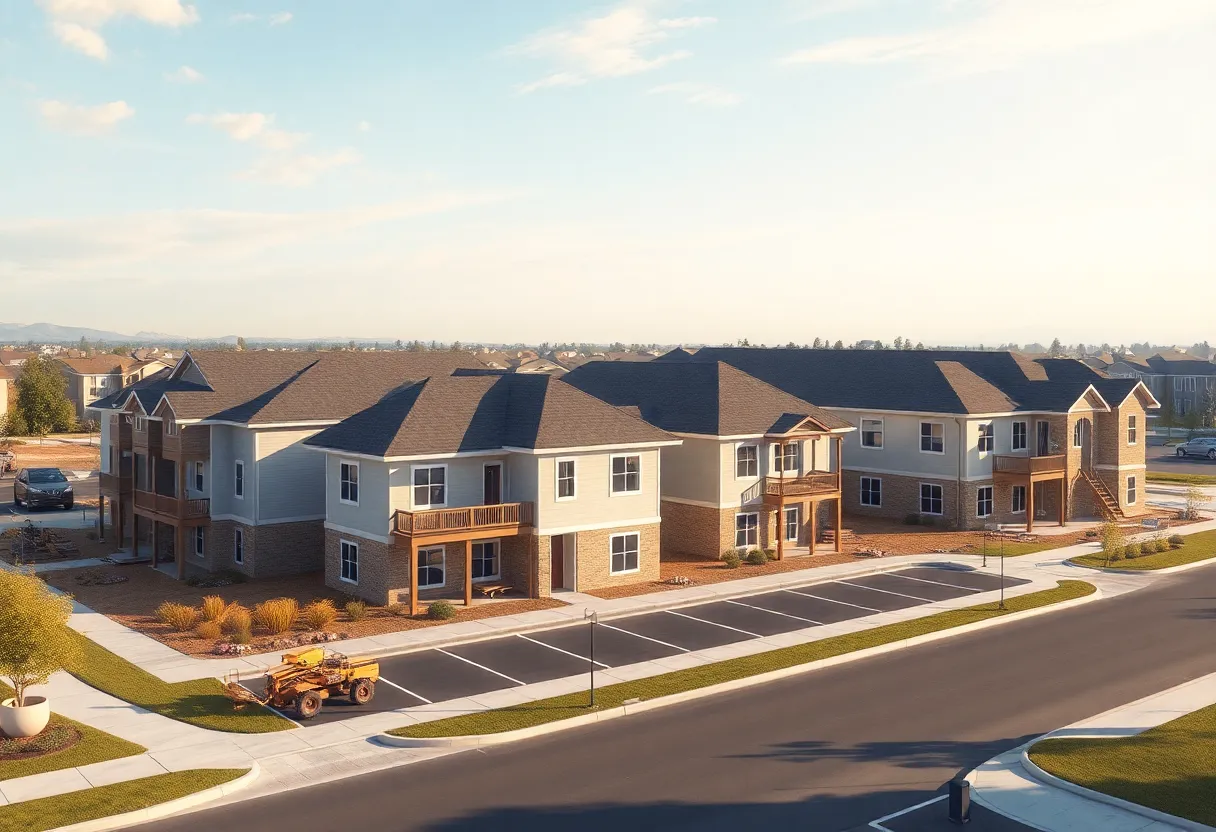Montana, USA, August 26, 2025
News Summary
Mortgage brokers are increasingly pursuing one‑time close construction loans across FHA, VA, USDA and conventional products to serve first‑time buyers and new home builders. The single‑closing structure reduces fallout risk, lowers upfront cash needs, and pays brokers at one permanent close rather than a separate refinance. Meanwhile, a $1.44 billion DOE loan guarantee for a Montana renewable fuels expansion has been unfrozen with an initial $782 million draw, and a regional Montana bank reported solid Q2 earnings driven by loan growth and wider net interest margins. Builders, brokers and buyers must manage documentation and builder approvals to convert inquiries into funded builds.
Brokers See Opening in One‑Close Construction Loans as Big Energy Loan Is Restarted and Local Bank Posts Strong Quarter
Mortgage brokers and loan officers are increasingly chasing construction and down‑payment assistance leads as first‑time buyers struggle with high mortgage rates and tight household budgets. At the same time, a large federal loan for a renewable fuels project in Montana has been unfrozen and a regional bank holding company reported solid second‑quarter results. The trio of developments could shift both supply of new homes and local lending activity.
One‑time close construction loans gain traction
Wholesale lenders that offer one‑time close construction loans are drawing more broker interest because those products lock in financing once rather than twice. One‑time close loans are available across FHA, VA, USDA and conventional channels from lenders that support all four products. Brokers say the single closing model removes the usual risk that a borrower will not qualify again after construction, and it can remove extra closing costs for the borrower.
Lenders offering these programs often maintain an in‑house construction unit to handle the project steps and documentation. Originators who learn how the programs work are getting steady inbound inquiries — at least ten new construction questions a week for some regional lenders — and many loan officers are finding construction lending to be a lucrative niche. For brokers, finding a lender that will underwrite the loan once and fund construction reduces the risk of losing a deal at the refinance or second close.
From the borrower side, getting a construction loan through a one‑time close is very similar to buying an existing home in terms of required paperwork for some programs. Certain FHA construction products allow no monthly payments during construction for set terms (for example, six to 12 months), while conventional construction loans typically require interest‑only payments during build‑out. VA and USDA construction pathways can permit financing with no down payment on brand‑new, dirt‑up homes when program conditions are met. FHA new‑construction purchases still require a minimum down payment amount in line with standard FHA rules.
Lenders and brokers stressed that the operational difference is internal: underwriters and construction teams must both clear their items, creating a close working relationship between the two. Marketing these capabilities gives brokers a competitive edge over those who only handle standard purchase loans, and working through tougher deals can help originators grow market share during slow periods for traditional refinances.
Montana Renewables federal loan unfrozen, project funding moves forward
Federal backing for a major renewable fuels expansion linked to a Montana refinery was restored after a brief federal review. The loan guarantee covers roughly $1.44 billion of principal and about $233 million of capitalized interest, a total referenced in public filings at about $1.67 billion. The project’s first drawdown of approximately $782 million was applied toward eligible prior expenses, with the remaining funds held for a delayed draw during construction beginning in 2025 and running through planned completion in 2028.
The financing supports expansion that will boost sustainable aviation fuel (SAF) capacity to roughly 300 million gallons per year, and about 330 million gallons per year when combined with renewable diesel. The build includes a second reactor expected to bring roughly half of the SAF capability online by 2026, plus modular upgrades such as increased renewable hydrogen production, cogeneration, and onsite water treatment.
The company also moved to secure a county tax abatement on about $6.1 million of equipment installed in 2024 and has pending tax appeals for earlier years. Local approvals and environmental certifications remain part of the regulatory path as the project moves into construction and draws on delayed loan proceeds.
Regional bank posts steady gains in Q2 2025
A Montana bank holding company reported net income of $3.2 million, or $0.41 per diluted share, in the second quarter of 2025, matching the prior quarter and improving on results from a year earlier. Total assets were about $2.14 billion and total deposits were $1.74 billion at quarter end. The board declared a quarterly cash dividend that will be payable in early September.
The lender saw growth in loans and deposits, an improving net interest margin that reached 3.91% in Q2, and higher net interest income compared with prior periods. New residential mortgage originations increased quarter over quarter, driving higher mortgage banking income and commissions. Commercial real estate and agricultural loans rose year over year, while residential mortgage and construction loan balances showed modest declines.
The bank recorded a one‑time increase in provision for credit losses in the quarter, which raised the allowance but nonperforming loans remained low. Regulatory capital ratios stayed above well‑capitalized thresholds and tangible book values increased year over year.
Market context and what to watch
First‑time buyers continue to face affordability pressure amid higher mortgage rates, even as housing inventory has edged up and new home construction has slowed. One‑time close construction lending could ease bottlenecks by making it simpler for buyers to build, while federal project financing and regional bank liquidity may support local construction supply chains and farm‑feedstock markets tied to renewable fuel projects. Watch lender program rollouts, local permitting and tax appeal outcomes, and bank lending mix shifts for clues about how supply and buyer access will change over the next 12 to 36 months.
FAQ
What is a one‑time close construction loan?
A one‑time close construction loan combines construction financing and permanent mortgage financing into a single loan with a single closing. That means the borrower signs once and avoids a second refinance close after the home is built.
How does a one‑time close help brokers?
Brokers benefit because they are paid at the initial closing and avoid the risk that a refinance close will fall through. It also differentiates brokers who can offer construction options from those who handle only standard purchases.
What payment options exist during construction?
Some programs require no payments during construction for set terms, others require interest‑only payments. The exact terms depend on the loan product (FHA, VA, USDA, conventional).
What does the restarted federal loan mean for the local project?
Restored loan funds allow the project to move from planning toward construction funding. Initial drawdowns pay earlier eligible costs and later tranches will support construction activity through planned completion.
Do the bank’s results affect local mortgage availability?
A lender reporting growth in loans, deposits and margins is generally better positioned to originate and sell mortgages. Increased mortgage originations and a higher margin on loan sales can boost local mortgage activity.
Key features at a glance
| Feature | Details |
|---|---|
| One‑time close construction loan | Combines construction and permanent financing into one closing; reduces borrower costs and refinance risk. |
| Loan products covered | FHA, VA, USDA and conventional options available from lenders with in‑house construction teams. |
| Payments during construction | Varies by product: some FHA programs allow no payments; many conventional programs require interest‑only payments. |
| Montana renewable fuels loan | $1.44B principal loan guarantee (with $233M capitalized interest) restarted; $782M first draw funded; project completion planned by 2028. |
| Local bank highlights (Q2 2025) | Net income $3.2M; assets $2.14B; deposits $1.74B; NIM 3.91%; dividend declared $0.145 per share. |
Deeper Dive: News & Info About This Topic
Additional Resources
- FuelCellsWorks: Montana Renewables announces closing of $1.44 billion DOE loan facility
- Wikipedia: Sustainable aviation fuel
- GlobeNewswire: Eagle Bancorp Montana Q2 2025 results
- Google Search: Eagle Bancorp Montana Q2 2025 earnings
- GlobeNewswire: Q2 2025 supplemental resource (download)
- Google Scholar: DOE loan guarantee Montana renewable fuels
- The Electric GF: Sen. Daines — $1.44B federal loan to Calumet back on
- Encyclopedia Britannica: Calumet renewable fuels (search)
- REBusinessOnline: Gantry secures $10.5M loan for multifamily community in Montana
- Google News: Gantry multifamily loan Montana





